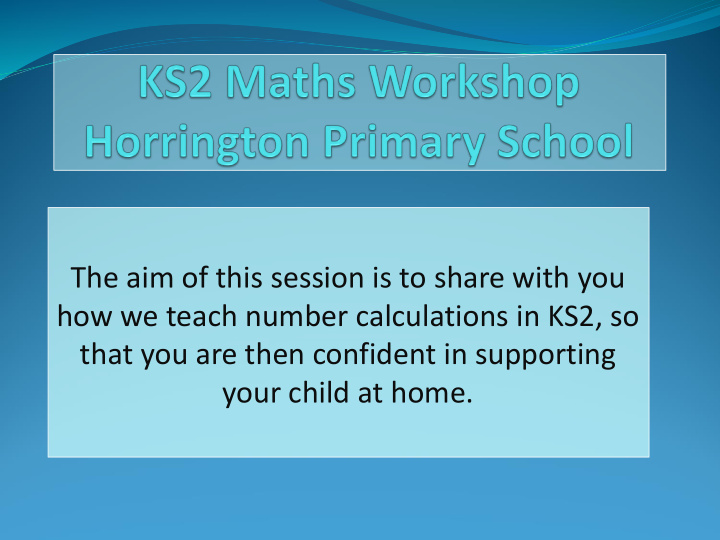



The aim of this session is to share with you how we teach number calculations in KS2, so that you are then confident in supporting your child at home.
KS2 number calculations Mentally adding and subtracting numbers Column addition and subtraction (Year 3/4) Short multiplication (Year 4) Long multiplication (Year 5) Short division (Year 3/4) Long division (Year 6) Estimating using the inverse Estimating using rounding Calculate with increasingly large numbers throughout KS2 and with fractions and decimals. Order operations (BODMAS)
How do we teach number calculations? Is starting with formal written calculations a good place to start when teaching children the 4 calculations: addition, subtraction, multiplication and division. Is this how we were taught at school? Did we understand the methods?
How do we teach number calculations? We continue to use the concrete – pictorial – abstract sequence of teaching started in KS1. This means that we use the concrete apparatus and models and images alongside formal calculation strategies. Pictorial part of the sequence is vital in KS2 for deep understanding.
Concrete – apparatus or resources Numicon Counters Place value counters Multilink cubes Dienes Dominoes/ dice/ playing cards/ digit cards 100 square Number line/ ruler Rulers
Pictorial – models and images Bar models Part-whole models Place value charts Number lines
Pictorial – models and images Bar models for addition and subtraction
Pictorial – models and images Bar models for multiplication and division
Pictorial – models and images Part-whole models
Pictorial – models and images Place value charts and number lines
Abstract – written methods White Rose Hub calculation policy and guidance (attached) Horrington Primary School calculation policy on school website
Other areas of maths The following youtube video is a really useful look at how bar models and part-whole models introduced in KS1 can be used in KS2 for finding fractions of a number https://www.youtube.com/watch?v=odLkDr0v wkg
Conceptual variation – different ways of doing calculations Different ways of writing calculations Understanding = sign is really important Missing numbers Word problems Asking questions using models and images Draw this calculation Show this calculation using counters Finding errors in calculations
Any questions?
Recommend
More recommend